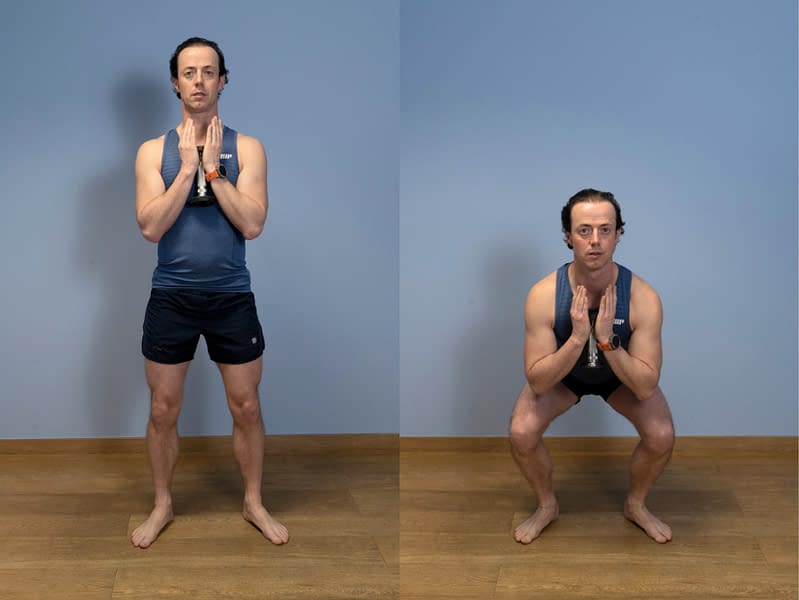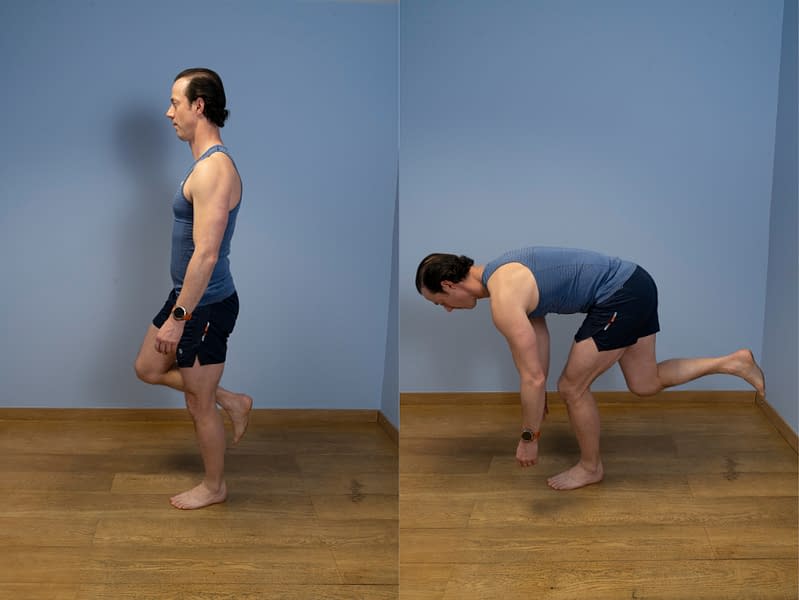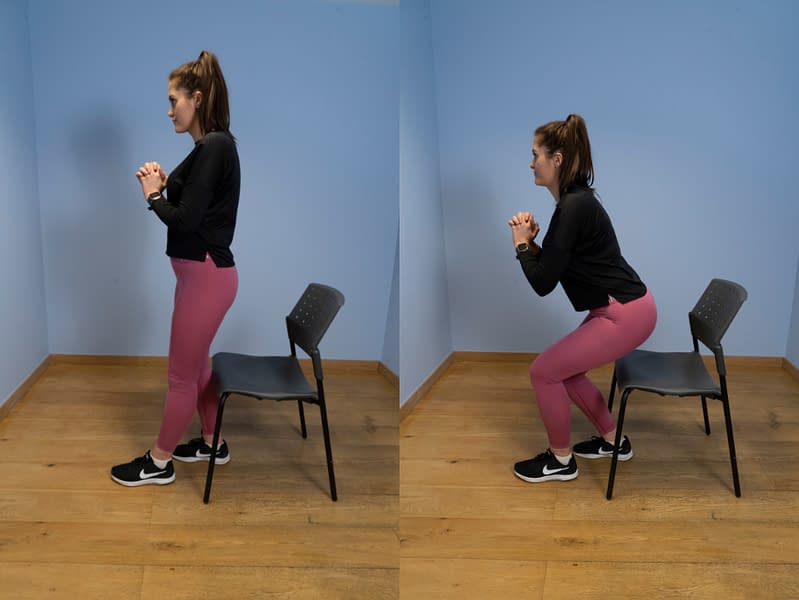Femoroacetabular Impingement Advanced Exercise Programme
Aim to perform this programme a minimum of once per day unless prescribed otherwise. As with any new exercise, start slowly (repetitions as able) and build up as you are able within the guidelines below.
Pain should not exceed 3/10 whilst completing this exercise programme.
1. Weighted squat
- Stand upright with your feet hip-width apart and a weight placed evenly across your shoulders (back squat) or holding it securely against your chest (goblet squat).
- Engage the abdominal region and in a controlled manner, sit back as if you are sitting into a chair.
- At the same time, your head and chest will come forwards to maintain your balance, aim to keep your back straight.
- Go down as far as you feel comfortable or until your thighs are parallel with the floor.
- Come back up to standing and repeat.
2. Single leg pendulum
- Standing with feet shoulder width apart, take your weight onto one leg, bringing your other knee up level with the hip.
- From this position keep your weight on the standing leg, push your other foot down and out backwards like you are pressing a wall away until it is straight out behind you whilst simultaneously bending your torso forward to counterbalance yourself.
- Try to return to the start without putting your foot down to the floor. It is ok if you cannot do this but practice will improve it. Repeat on both legs.
3. Split stance - sit to stand
- Stand in front of a normal height dining chair with one leg in front of the other, shoulder width apart.
- Transfer most of your weight to the leg closest the chair.
- Then slowly start to lower yourself back toward the chair, keeping as much of your weight as you can on the leg closest the chair.
- Once you touch the chair, quickly reverse the movement to stand back up.
We recommend consulting a musculoskeletal physiotherapist to ensure exercises are best suited to your recovery. If you are carrying out an exercise regime without consulting a healthcare professional, you do so at your own risk. If you have any concerns whilst completing these exercises, please contact a healthcare professional.
More Plans
This programme focuses on strengthening muscles around the hip joint and aiming to increase the flexibility of muscles that may have become tighter due to pain. It must be understood that whilst pain during and after these exercises cannot be totally avoided, a significant increase in pain is not desirable. Pain should not exceed 3/10 on your self-perceived pain scale whilst completing this exercise programme.
- 0
- 1
- 2
- 3
- 4
- 5
- 6
- 7
- 8
- 910
This is the next progression. More focus is given to developing lower limb strength and stability. This programme may be performed every other day as tolerated. It is important to maintain dialogue with your physiotherapist if symptoms change because of the exercises. Pain should not exceed 3/10 on your pain scale.
- 0
- 1
- 2
- 3
- 4
- 5
- 6
- 7
- 8
- 910


